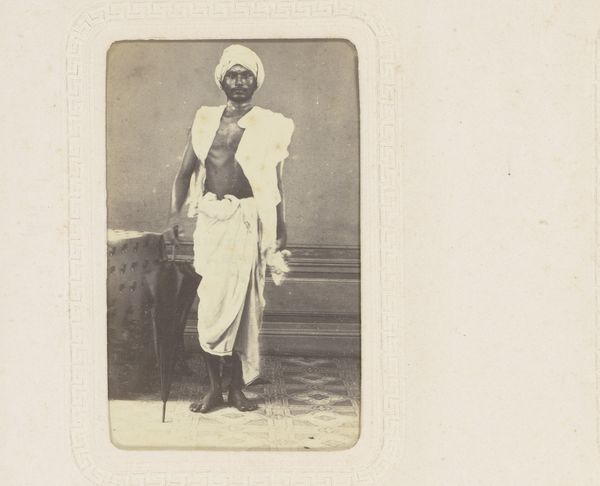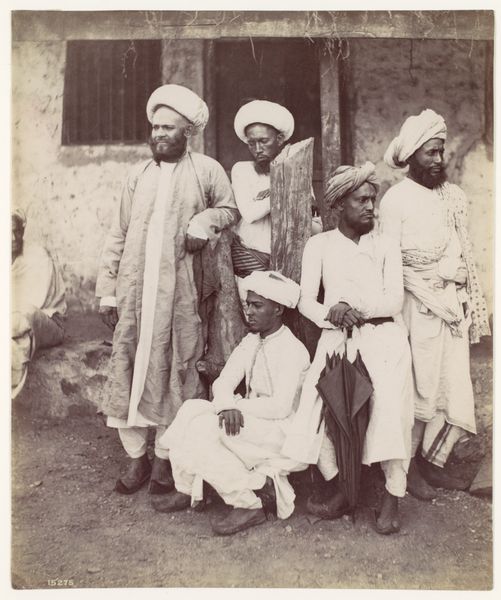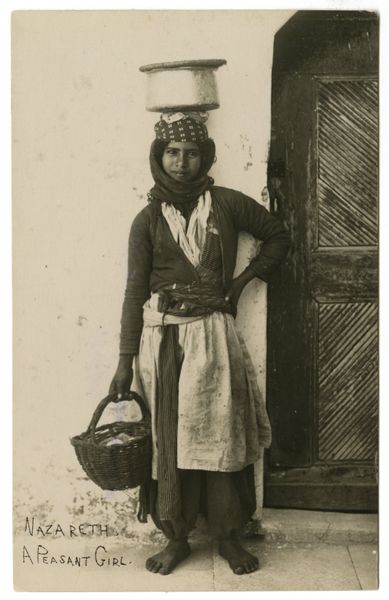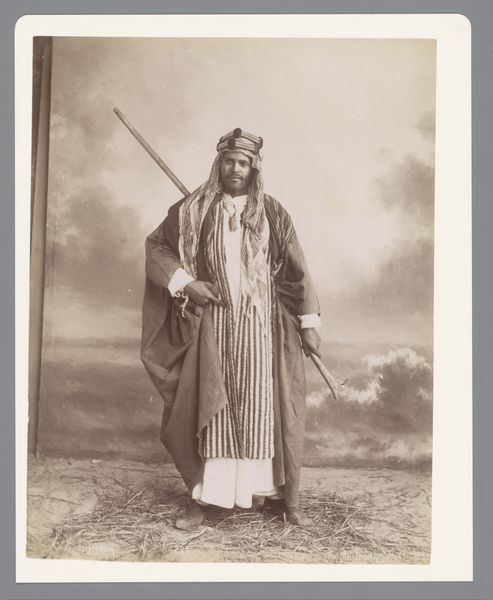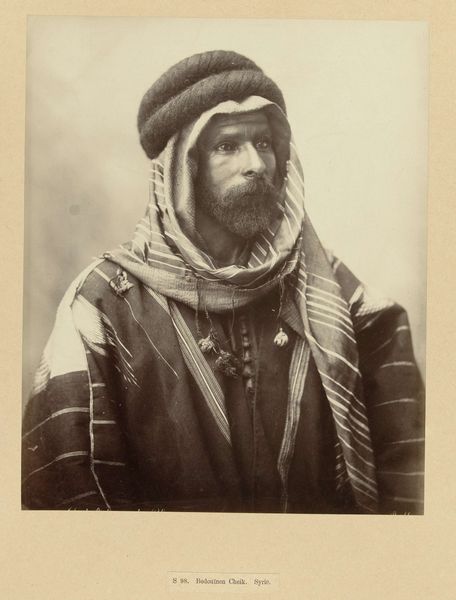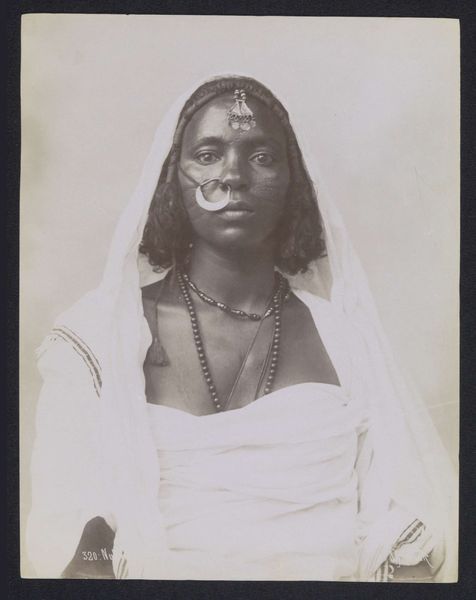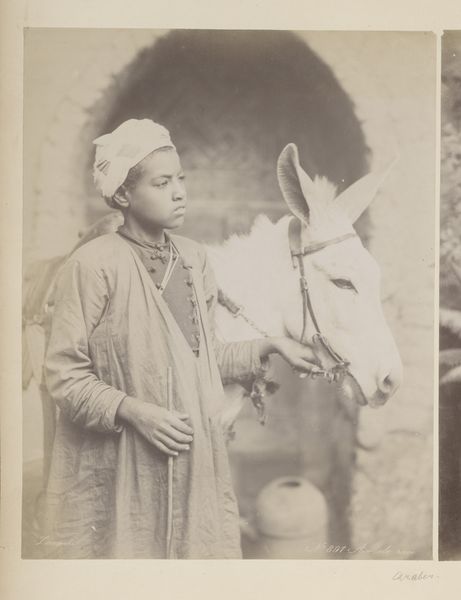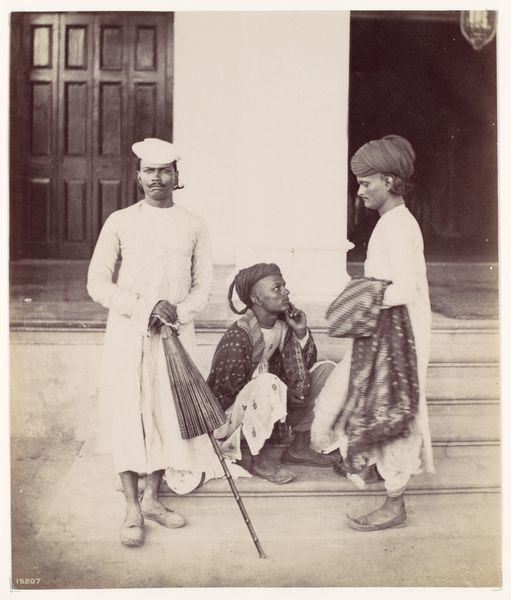
photography
#
portrait
#
african-art
#
still-life-photography
#
photography
#
portrait photography
Dimensions: height 279 mm, width 218 mm
Copyright: Rijks Museum: Open Domain
Editor: This striking photograph, “Portrait of an Unknown Man of the Besharin Tribe,” was captured sometime between 1870 and 1900 by C. & G. Zangaki. The subject's gaze and the stone wall backdrop create a sense of stoicism. How does this portrait fit into the broader context of image making at this time? Curator: It’s essential to remember photography's role in the colonial project. These types of portraits, ostensibly documenting “exotic” cultures, often served to reinforce a Western sense of superiority. Think about how these images circulated - not within the Besharin community, but in European drawing rooms and world exhibitions, reinforcing specific ideas about race and otherness. How do you think that affects our reading of the photograph today? Editor: That's sobering. It makes me wonder about the power dynamic involved. Was this man compensated or given agency over how he was presented? The composition, with its staged backdrop, now seems less about capturing reality and more about constructing a specific narrative for a Western audience. Curator: Precisely! It's crucial to analyze the visual language – the deliberate choice of attire, the carefully chosen backdrop. All contribute to a curated representation of the “Other.” Whose story is really being told, and who benefits from its telling? What ethical implications do we need to consider? Editor: I never thought about it that way before. This photo, initially just an interesting portrait, now prompts a deeper reflection on the historical forces at play during its creation and reception. Thanks! Curator: Absolutely, the best art prompts such critical dialogue with our history, constantly challenging our assumptions. The camera, though intending to reflect reality, is always caught within layers of historical complexity.
Comments
No comments
Be the first to comment and join the conversation on the ultimate creative platform.




